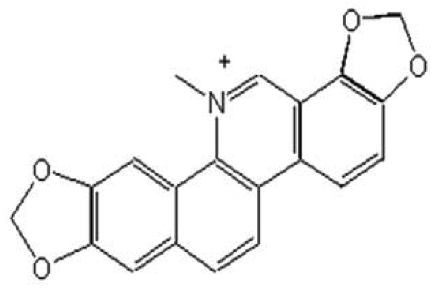
Facts
- Bloodroot has been used for many years and for several different reasons and purposes. During this time, it has acquired a variety of common names. These include red puccoon, tetterwort, redroot, pauson, turmeric, sweet slumber, Indian paint, corn root, snakebite, and sang dragon.
- It is illegal to take bloodroot from the woods
or from parks unless you
 have permission from the
land owner.
have permission from the
land owner. - Morphine and sanguinarine have the intermediate, (S)-reticuline in common.
- Bloodroot is being tested as a treatment against cancer.
- The flower of bloodroot is located on a separate stalk than the basal leaves.
- Bloodroot must be harvested in the fall in order for it to have time to spread it's seeds for the next seasons crop.
- Potential yield per acre is estimated at 1,500 lbs.
- When bloodroot is in bloom, it opens during the day and closes at night.
- Bloodroot seeds require a cold period in the winter in order to produce a root.
- A warm period is also required so that the shoot will grow.
- Bloodroot is sometimes used as a dewormer for cattle and sheep
- Studies have shown that bloodroot kills cancer cells but does not harm healthy cells.
Toxins
- Bloodroot consists of a few different alkoloids like Sanguinarine, Chelerythrine, Berbrine, oxysanguinarine and Protopine. Protopine is an opium alkoloid.
- Sanguinarine is the most prominent alkaloid and it forms colorless crystals.
- The molecular formula for Sanguinarine or Puesdochelerythrine, which is the active medicinal ingredient in bloodroot, is [C2OH14NO4]+, and its molecular weight is 33.334.
Structure of Sanguinarine
- Sanguinaria is a a substance that kills tissue and when it touches the skin, causes severe pain.
- "Sanguinarine kills animals cells by blocking Na+/K+-ATPase transmembrane proteins. As a result, applying bloodroot to the skin may destroy tissue and lead to the formation of a large scab, called an eschar. Bloodroot and its extracts are thus considered escharotic." (rexresearch.com)








